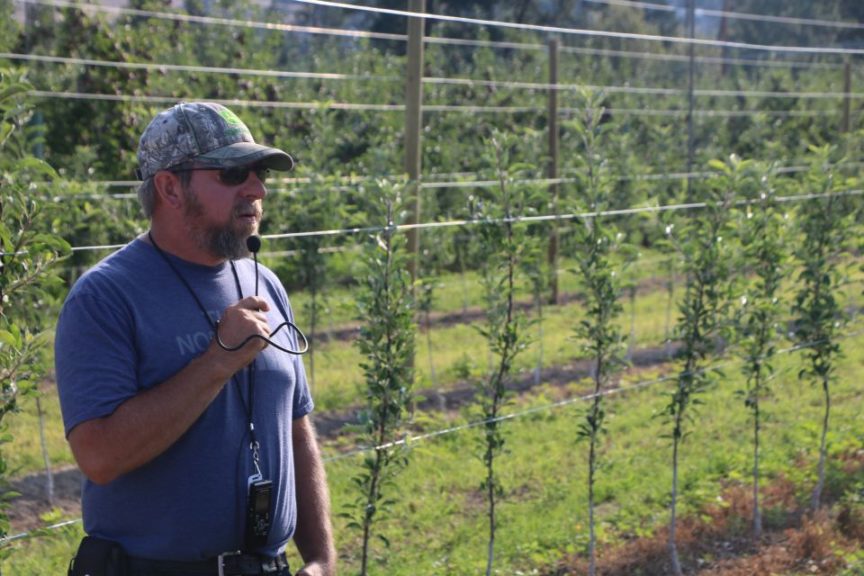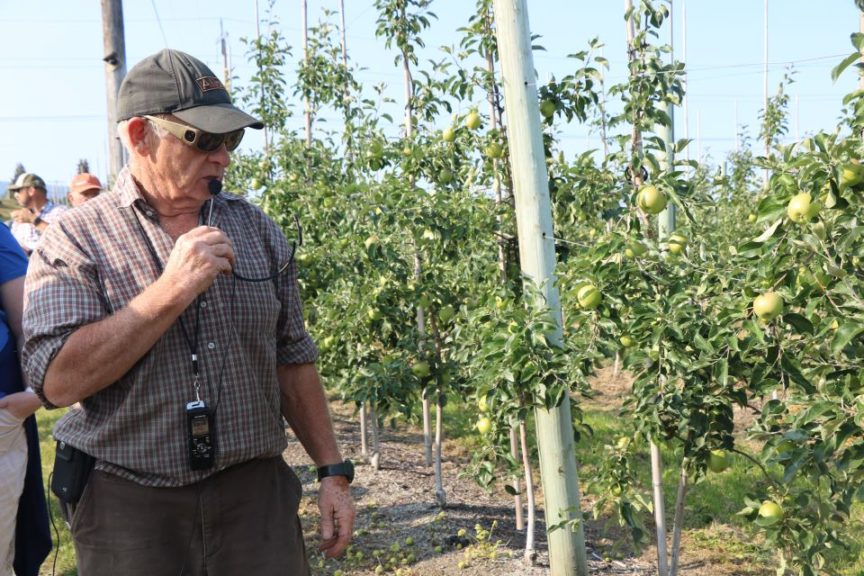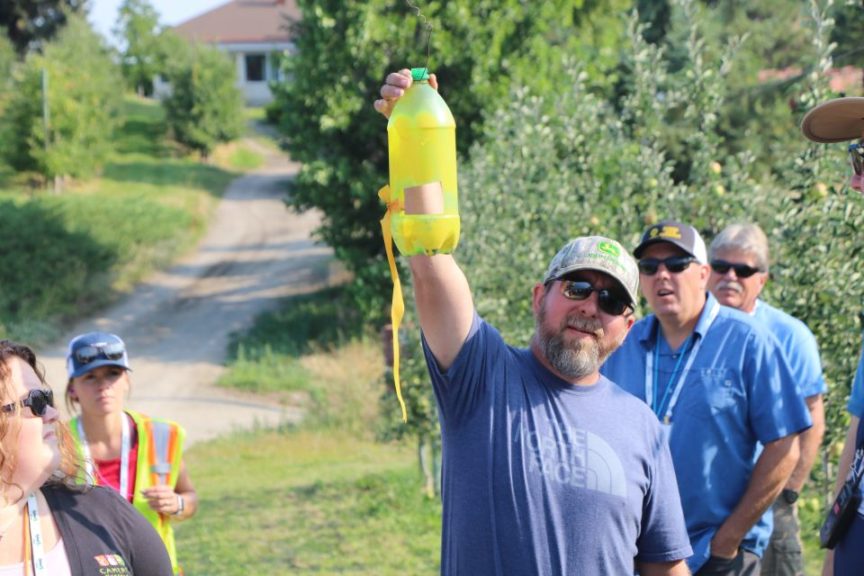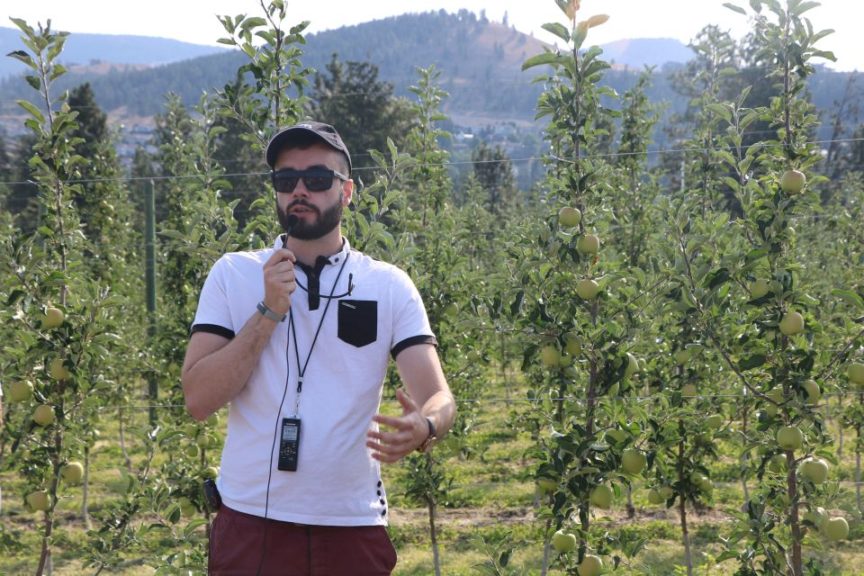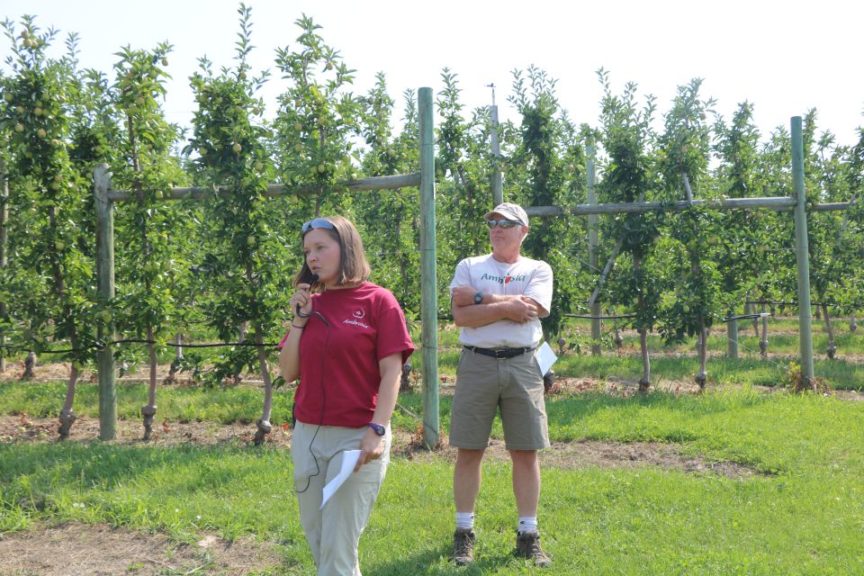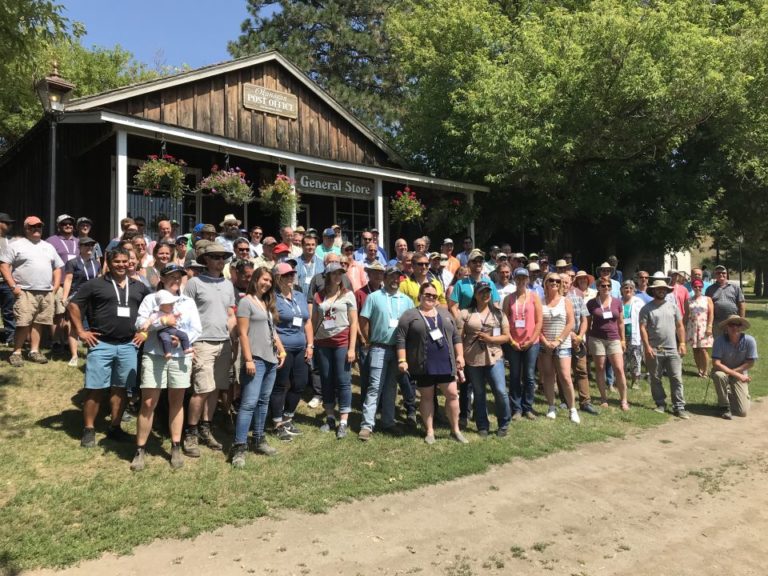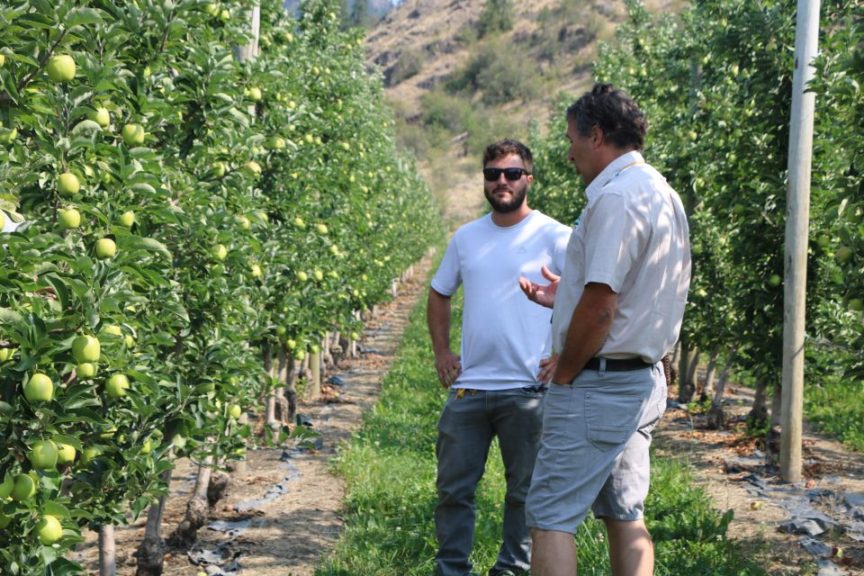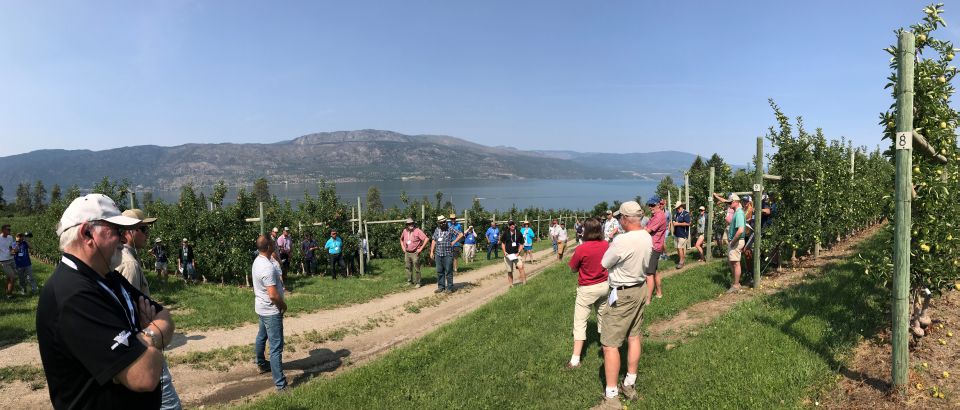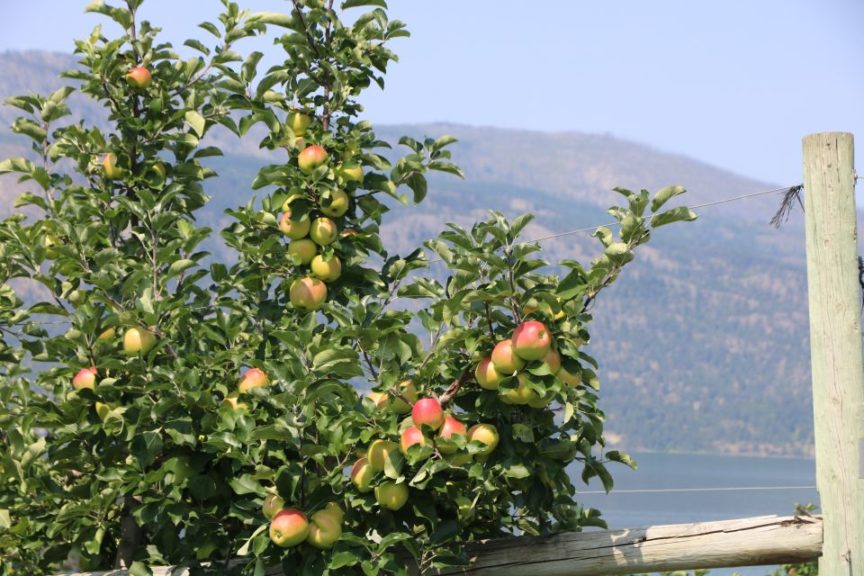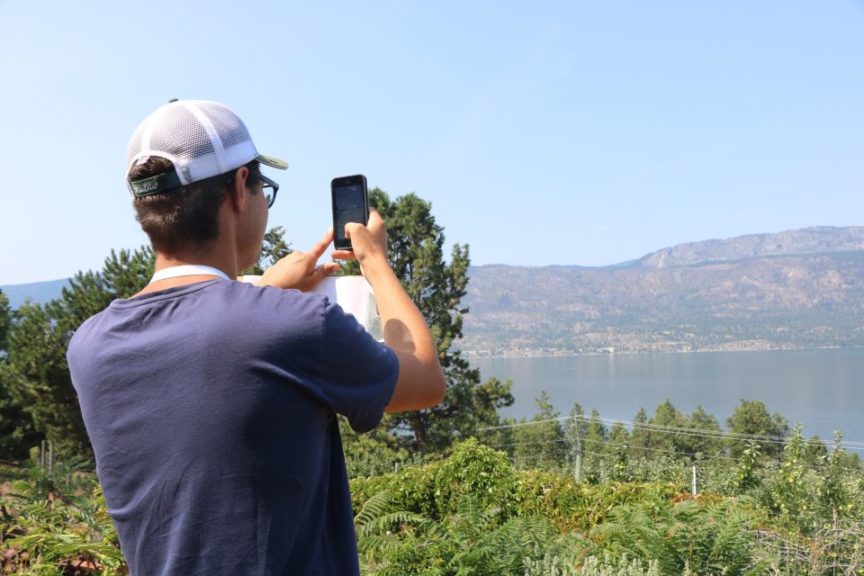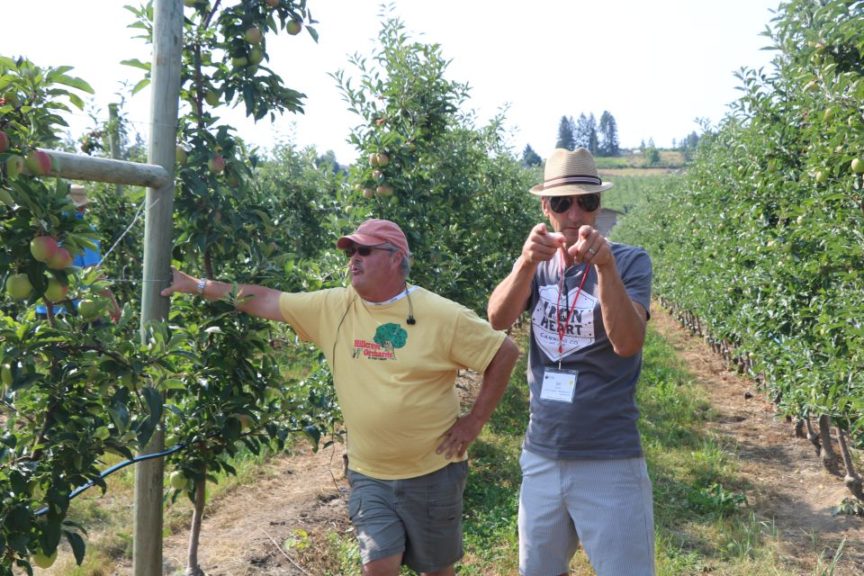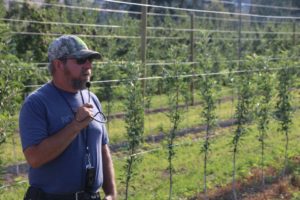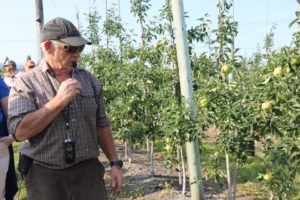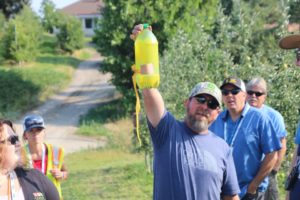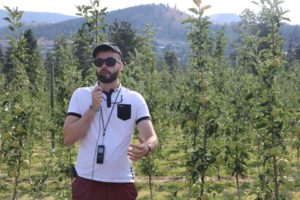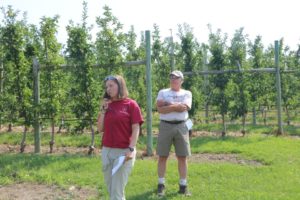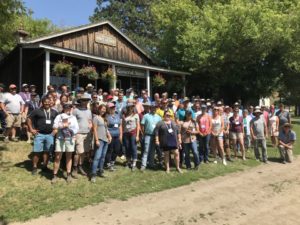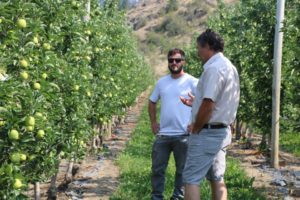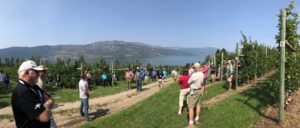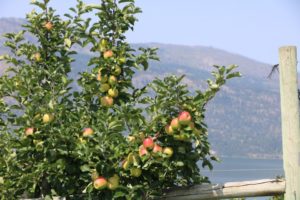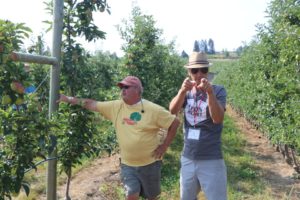Super Spindle Apple Plantings Pique Interest at IFTA Tour Finale
While the folks in British Columbia may not have invented the super spindle production system for apples, it’s safe to say they perfected the endeavor. The final day of the International Fruit Tree Association’s summer tour in British Columbia took attendees to breathtaking super spindle orchards overlooking the Okanagan Lake.
Louis van Roechoudt of Dorenberg Orchards was the first grower to adopt dwarfing rootstocks in the 1950s in British Columbia with a 6-foot-by-11-foot ‘Golden Delicious’ planting and the first to show dense plantings could be commercially viable in the Okanagan. The family pioneered a van Roechoudt trellising system where the tops of trees were trained along wires in a single plane, and the bottom of the canopy is 3-D. This is believed to help poor-coloring varieties get color into the bottoms of the tree. Currently, Madeline van Roechoudt, President of Dorenberg Orchards, is the third generation of her family farming the orchard.
Since then, her family has transitioned to a 5-wire super spindle system. Branches are laid down on the wires to create fruiting walls.
“Put the supporting system in well the first time and it will be kind to you,” Raymond Fisher, Orchard Manager, says.
The first ‘Ambrosia’ planting at Dorenberg Orchards in Winfield, BC, was planted in the early- to mid-1990s. While the family wasn’t quite sure what to think, the small block netted $1,000 a bin.
“A little light bulb when off in our heads,” Fisher says.
Since then, the family moved more heavily and quickly into ‘Ambrosia,’ with 20 acres currently planted. The last ‘Ambrosia’ planting had rootstock under plastic. With a density of 2.8 feet-by-9.5 feet on M.26.
“It seems like a match made in heaven,” Fisher says of this rootstock and variety planting. Fischer adds ‘Ambrosia’ tends to produce short fruiting shoots called dards and the M.26 rootstock helps to create a more linear ‘Ambrosia.’
The goal is to get ‘Ambrosia’ to the top wire by the third lea with a constant renewal of fruiting wood.
“Limbs that grow into the wire can’t renew,” Fisher says. “[We] remove big limbs and look for a nice, flat response.”
One of the big challenges they face, van Roechoudt says, is the change in soils on a hilly site that overlooks Lake Okanagan. Soil shifts from beach sand at the bottom of the slope and it transitions to clay at the top.
Higher elevations get more irrigation and drip is used separately. Overhead cooling also is used to cool down the orchard.
“I’m still a guy who likes the deep water cycle,” Fischer says.
Growers Battle New Enemy
Northview Orchards in Kelowna, BC, also is making its mark with super spindle orchards.
While looking at a fourth-leaf planting of ‘Honeycrisp’ on M.26, Co-owner Brian Witzke says, “I wouldn’t put that on M.26 again. I call it the apple tree from hell.” Witzke says the quality has suffered and the fluctuating soil from clay to gravel to sand on their 30-acre farm, which makes rootstock choices a bit of a challenge. Witzke says perhaps Nic.29 would have been a better option.
Trees are trellised and clipped in about three or four locations along the central leader. About 50% of cut are made after planting, and trees are not headed.
“That’s generally the right thing to do with super spindle,” grower Sam DiMaria says. “You don’t head the trees when planting that close.”
Brian and his son Shayne are converting all ‘Gala’ acres to ‘Royal Gala.’
“We’ll hopefully be down to one pick,” Brian Witzke says.
The Witzkes are battling a new enemy in apple clearwing moth. It has been a latent pest in British Columbia for about 12 years. But as temperatures soar to the high 80s and low 90s, it becomes a serious threat. Apple clearwing moth bores into the bark and is quite deadly on young plantings. It resembles the peachtree borer, but with clear wings.
Scouting at the graft union for rust stains which indicate the entry of apple clearwing moth. Bottle traps with grape or apple juice and vinegar are set around the orchard.
“You do not want this thing,” Brian Witzke says. “A lot of guys aren’t spraying for them.”
Renewal also is the name of the game, no branches older than 4-years-old are left.
“I used to do top work,” grower Wilfrid Mennell says. “Top work is absolutely the worst.”
The Witzkes drench the bark of their trees to prevent apple clearwing moth.





